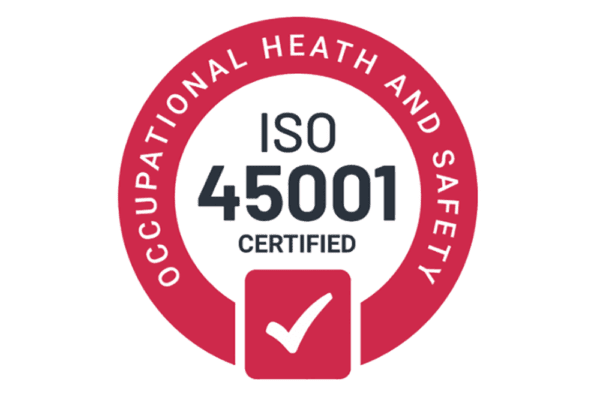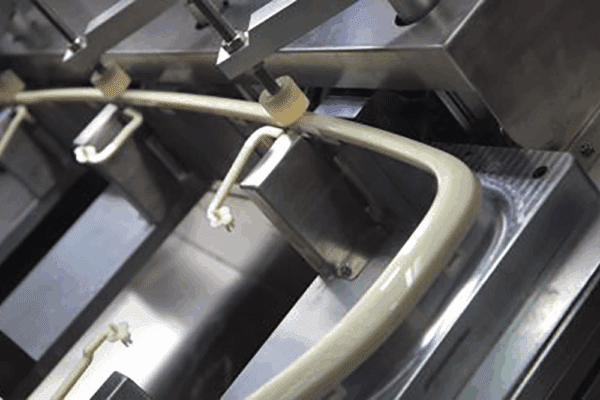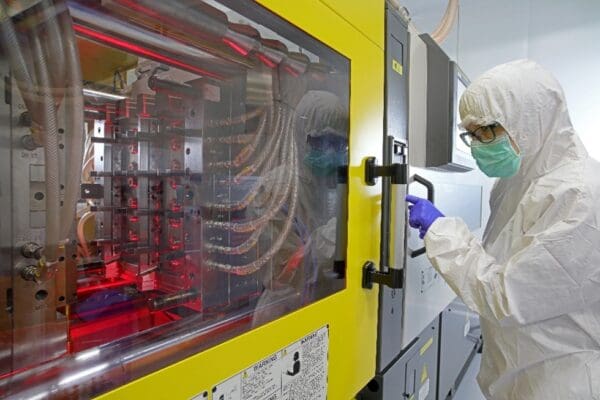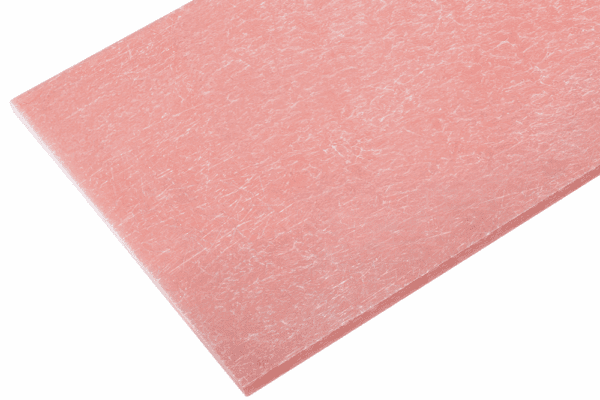
RJG Blog // How to Implement Effective Injection Moulding Quality Control Measures
|
Getting your Trinity Audio player ready...
|
Quality control is a critical aspect of any successful business. It ensures that products meet specific standards and customer expectations, leading to higher satisfaction, reduced costs, and a stronger brand reputation. Implementing effective quality control measures involves systematic processes, strategic planning, and continuous improvement. In this blog, RJG explores how to develop and maintain a robust quality control system in your organisation.
Key Steps in Implementing Quality Control Measures
1. Define Process Parameters
Understanding Material Properties: The first step is to thoroughly understand the properties of the material being used. This includes its melt flow index, thermal stability, moisture content, and any other relevant properties that could affect the moulding process.
Machine Capabilities: Assess the capabilities of the injection moulding machine. This includes understanding the clamping force, injection pressure, screw design, and any auxiliary equipment.
Tooling Design: Design the mould with precision, considering factors such as gate design, cooling channels, venting, and ejection systems. The mould should be tested for functionality and accuracy before production begins.
2. Process Optimisation
Scientific Moulding: Implement scientific moulding techniques, which involve using data to set and optimise processing parameters. This includes conducting Design of Experiments (DOE) to understand the effects of various process parameters on part quality.
Process Window Development: Develop a process window that defines the range of acceptable parameters (e.g., temperature, pressure, and time) within which quality parts can be produced. This involves running trials to identify the optimal settings and their acceptable variations.
Cycle Time Optimisation: Optimise cycle times to balance production efficiency and part quality. This includes minimising cooling time without compromising part integrity and ensuring that other process phases (e.g., injection and packing) are also optimised.
3. Define Quality Standards
Before you can control quality, you must define it. Establish clear, measurable quality standards based on customer needs, industry regulations, and internal requirements. These standards should cover all aspects of the product, including:
- Materials: Specifications for raw materials.
- Processes: Guidelines for injection moulding processes.
- Final Product: Performance, durability, appearance, and other attributes.
4. Develop Standard Operating Procedures (SOPs)
Create detailed SOPs for every stage of the production process. SOPs ensure consistency and provide clear instructions for workers, which helps maintain quality. These procedures should include:
- Step-by-step instructions: For tasks to be performed.
- Quality check points: Specific stages where quality should be assessed.
- Documentation: Recording results and deviations from standards.
5. Implement Training Programs
Quality control is only as effective as the people who implement it. Regular training ensures that all employees understand quality standards, SOPs, and the importance of quality control. Training programs should cover:
- Quality standards: What they are and why they matter.
- SOPs: Detailed instruction on following procedures.
- Problem-solving: How to identify and address quality issues.
6. Utilise Quality Control Tools and Techniques
There are numerous tools and techniques available to help monitor and control quality. Some of the most effective include:
- Statistical Process Control (SPC): Uses statistical methods to monitor and control production processes.
- Six Sigma: A data-driven approach aimed at reducing defects and variability.
- Pareto Analysis: Identifies the most significant factors in a process, helping prioritise improvements.
- Failure Mode and Effects Analysis (FMEA): Evaluates potential failure points in a process to prevent defects.
7. Conduct Regular Audits and Inspections
Regular audits and inspections are essential to ensure that quality control measures are effective. This includes:
- Internal audits: Conducted by your quality control team to assess compliance with SOPs and quality standards.
- External audits: Performed by third-party auditors to provide an unbiased assessment of your QC system.
- Inspections: Regular checks at various stages of the production process to catch defects early.
- GAP Assessments: A team of RJG experts will come to your facility and perform an in-depth review of your processes, then present recommendations for improvement.
8. Implement Continuous Improvement
Quality control is not a one-time effort but an ongoing process. Use feedback from audits, inspections, and customer complaints to continuously improve your QC measures. Methods for continuous improvement include:
- Plan-Do-Check-Act (PDCA): A cyclical process for continuous improvement.
- Root Cause Analysis: Identifying the underlying causes of defects and addressing them.
- Benchmarking: Comparing your processes and performance against industry leaders to identify areas for improvement.
9. Leverage Technology
Modern technology can significantly enhance quality control efforts. Implementing the right tools can lead to more efficient and accurate QC processes. Consider:
- Automated inspection systems: Use of AI and machine learning to detect defects.
- Networking System (like The Hub): For tracking quality metrics, managing audits, and ensuring every shot.
- Process Control System (like CoPilot): Tells you when a process is straying off the template and ensures you’re making consistently high-quality parts.
- AI Process Assistant (like MAX): Guides you step-by-step on how to fix a process when it strays.
- Cavity Pressure Sensors: Show you what’s happening inside the mould before it opens to ensure quality.
Conclusion
Implementing effective quality control measures is essential for delivering high-quality products that meet customer expectations. By defining quality standards, developing SOPs, training employees, using quality control tools, conducting audits, focusing on continuous improvement, and leveraging technology, you can create a robust quality control system. This not only enhances product quality but also improves efficiency, reduces costs, and strengthens your brand’s reputation. Remember, quality control is a continuous journey of improvement and adaptation to new challenges and opportunities.
Read more from RJG here.
RJG
+44 (0)1733 232211
Website
Email






